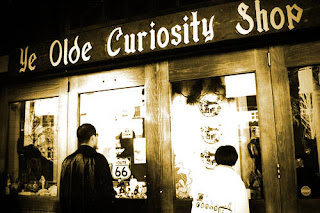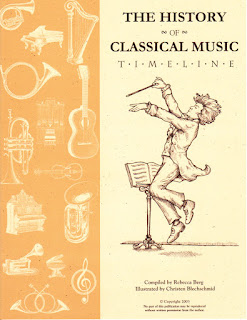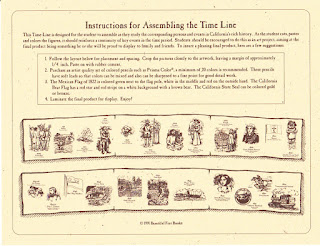Here at BFB, history is our passion. And that passion is something we want to spread to other people. In order to facilitate that, I am going to start a series featuring historical events, artifacts, and other things of an antiquated nature. It has become increasingly clear to me how useful historical knowledge is the more time I spend abroad. Travel becomes more enjoyable when you can place the cities you visit within their historical context, art becomes more meaningful when you know the forces that influenced the artist, and, things generally make more sense. History also provides essential context for current events, something that seems to be lost in more political discourse. So, this is the first in that series, and I hope you enjoy it. If you have suggestions for topics, I would love to hear from you!

Last week I had the opportunity to visit the little French village of Bayeaux. This idyllic town in the heart of Normandy is home to the Bayeaux Tapestry. As I have spent the past two years working on the revisions of our
Medieval History Through Literature study guides, I was just a bit overly excited to see this amazing piece of history. Stretching 230 feet in length, this tells, in comic book style, the story of the Norman invasion of England. The famous Battle of Hastings where William the Conqueror staked his claim on England is portrayed in all it's fierce and bloody action. The death of King Edward and his burial at Westminster Abbey appears in full color. Despite being nearly 1000 years old, this intricate piece of embroidery has had a colorful and varied history and now serves as a primary source document for researchers and historians.

Here's a bit of the history behind this fascinating piece. King Edward of England was dying and he had no apparent heir. At that time there was no formalized system of primogeniture so Edward needed to choose an heir. He chose the son of his great aunt, William the Bastard, the illegitimate son of the Duke of Normandy. Normandy was a large area in France that had been settled by Norse viking invaders. In fact it's name comes from normanz, plural of normand, originally from the word for "northman" in several Scandinavian language. Once King Edward decided on his heir, he sent Harold, the most powerful nobleman in England and Edward's brother-in-law to France to let William know about his future inheritance. This was a sly move on Edward's part because Harold's powerful position in England would have made him the presumptive heir. Instead he gets to schlep across the Chanel to let William know of his good fortune. And this is where the story depicted on the Tapestry begins. You can click on any of the images to enlarge.
 |
| King Edward, seated, sends Harold on his mission. |
Harold makes his way to France to deliver the news. He dutifully does so, but William is suspicious. In order to secure his inheritance, he makes Harold swear fealty, or loyalty, to him. He even makes Harold swear his oath while placing his hands on some holy relics! You can see this in the excerpt below:
 |
| On the left is Harold, his hands outstretched to touch two arks filled with holy relics. He is in a position of obeisance, pledging his fealty and loyalty to William. |
The story continues with the death of King Edward. You can see his death, funeral procession, and even Westminster Abbey!
 |
| The artists set the events in this sequence out of chronological order. The moment of Edward's death appears on the right. You can see him lying in the lower level of the house, a bishop performing the last rites. To the left, you see his funeral procession. Edward is embalmed and making his way to Westminster Abbey. At the top and bottom of the tapestry you can see illustrations of animals. Some of these depict scenes from Aesop's Fables! |
And here's where the action gets exciting. Harold has himself crowned king! It's a tricky move and one can see the coronation ceremony here:
 |
In the center you can see Harold's coronation, and to the right you can see the crowd observing. William, in his distrust of Harold, had spies in England and they were in that crowd. In the next scene you can see them sending a messenger to France to tell William about Harold's treachery.
|
And so the preparations for the Norman invasion begin! Trees are chopped down and ships are built. They are loaded with provisions, military supplies, food and drink, and horses. The action in these simple figures is wonderful! Haley's Comet even makes an appearance!
After all the preparations are complete, it's time to leave Normandy and head to England!
 |
| Following a last feast in Normandy, the Normans board their ships. Note how their pants are tucked up around their waists when they wade into the water to climb aboard the ships. |
 |
Here you see the ships making their way to England. Note that they were built in the style of the Vikings!
|
There are all sorts of preparations once the Normans land. Fortifications are built, a road is established, the soldiers even burn down an Anglo-Saxon house that stood in their way. But very soon, the battle is underway:
 |
The last scenes show the bloody Battle of Hastings. Here William defeats Harold, who is shot through the head with an arrow, and claims England as his own.
|
|
As you can see the tapestry portrays these events in all sorts of interesting detail. Each scene is skillfully set apart while a cohesive narrative takes place. It was commissioned by William's half-brother Odo, the Bishop of Bayeaux shortly after the events shown took place. It is thought to have been made in England by Anglo-Saxon embroiderers. The fact that it is so detailed and was made so soon after the actual events has made it an invaluable resource for historians and anthropologists. The details of every day life in the Middle Ages come to life in the stitching. We can see what people ate and wore, how they were entertained, and so much more.
The Battle of Hastings forever changed England. William the Conqueror, still known as the greatest invader of England, introduced many legal and social reforms to the Anglo-Saxons. He commissioned the Domesday Book, the most detailed historical register of its time. He also brought castles to England! Would you believe castles as we know them did not exist in England before William? He's even responsible for building the Tower of London.
Interesting, no? I loved my visit. The museum was very well done with interactive displays and even a video that aired in English and French. I was especially struck with something mentioned in the video that really brought home the value of knowing one's history. The movie closed with the reading of an inscription that appears in the Bayeaux Cemetery. A portion of the cemetery was designated for British soldiers who died during the D-Day invasions. It
states "We who were conquered by William, have now liberated the homeland of the conqueror."
For those of you who are interested in learning more about the fascinating Middle Ages, check out these resources:
Cathedral by David Macaulay also tells the fascinating history of Gothic architecture and the funding and building of the magnificent cathedrals one sees all over Europe.
Signed in 1215, less than 150 years after the Battle of Hastings, the Magna Carta was instrumental in the formation of democratic government. Read all about it in James Daughtery's classic The Magna Charta.
The World of Columbus and Sons by Genevieve Foster moves history forward out of the Middle Ages into the fascinating period of western exploration, the conflict of the Reformation, and the excitement of the Renaissance.
I hope you enjoyed the story of the Bayeaux Tapestry and I look forward to more entries in this series. If you have a topic you are interested in or would like to know more about, please leave a comment. I may choose it for a future entry!
Have a wonderful weekend!






















































